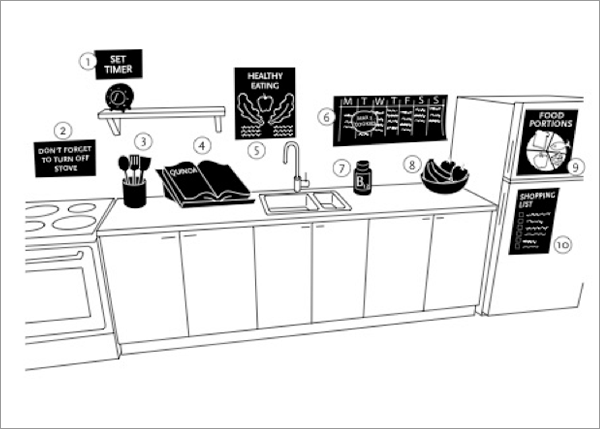By Diana Ballon, Editor, CAMH Publications
I can still clearly recall the disillusionment on several parents’ faces as we sat in a circle, discussing their need for resources that often didn’t exist to help their adult child with schizophrenia.
This was the early 1990s when I was co-facilitating a group for families of people with schizophrenia as part of a social work internship on an inpatient unit at the Montreal General Hospital.
Wind forward 25 years, and parents are still seeking the same kinds of supports to help them in the home. Few people know this more than Sean Kidd, a senior scientist here at CAMH, and his colleagues at the University of Texas at San Antonio. They had already developed an intervention that would provide pragmatic in-home strategies to families, and created a clinician manual.
So it was with great interest that, as part of CAMH Publications, I offered to work with Sean Kidd to help adapt a resource they had created for families.
We wanted something easily accessible for family members, something free of jargon, written in plain language that would be respectful of the challenges facing people with schizophrenia and their families, while also recognizing that people’s challenges can be very different. For example, one person’s relative might be having difficulty getting dressed on his own while another may be living independently and going to university. How could we make a book that was helpful for everyone?
Much of the answer came down to adopting a respectful tone, and also providing strategies as a series of choices.
In the initial text, suggested strategies were grouped in tables under headings such as “apathy-fair executive functioning” and “disinhibition-challenged executive functioning.” We decided to do away with this kind of terminology. Instead, we would group the strategies into sections for people who have “trouble getting started” (people who lack motivation to get going) and “trouble staying organized” (those who get started and then get distracted and forget things along the way).

When we pulled together a family review team, we found that the relatives we met with (parents of people with schizophrenia) all found that these categories resonated for them. They immediately could see their adult child in one of these two groups.
So we were on the right track. But one of the family members said that the draft we were showing them could be livened up a bit—made to look more like a manual. Picture a Home Hardware type manual with pictures and graphics and sidebars and large font sizes.
That’s when we went back to work to see how we could create more of a how-to type manual that would still look authoritative.

One of our in-house graphic designers, Mara Korkola, conducted an exhaustive search to find an illustrator who could create detailed pictures of the rooms of the house, with the various supports within each. I then took the suggestions that Sean and the other authors had come up with, and—brainstorming with fellow editor Jacquelyn Waller-Vintar—created about 20 lists of supports such as signs and checklists, that could go into each room. For example, under , a picture of a kitchen would include a sign on the fridge showing healthy food portions, a recipe book on the counter open to a page on quinoa, and a timer above the stove. For Managing Money, we would have an accordion folder on a table with sections for groceries and restaurants and transportation. And for Socializing and Communicating, we would have a mother asking her son, “How are you liking that [yoga] class?”

The next challenge was to show how some suggestions would be more appropriate to someone who had trouble getting started (TGS), while others would be better for people who have trouble staying organized (TSO). That’s when Sean suggested that we put little icons, like ones you would find on a restaurant menu showing spicy food items, next to the supports that were most relevant to that group of people.
And then there was the title of the book. In its previous iteration, it was called Changing Environments, Improving Functioning: Cognitive Adaptation Strategies for Families Supporting People with Schizophrenia. We decided to go with something simpler. Again, we polled our family reviewers and majority ruled: we would go with Supporting a family member with schizophrenia: Practical strategies for daily living.
And now here it is… It all starts and ends with family.
See schizophreniafamilystrategies.com for a downloadable version of this manual, along with various signs, forms and checklists described in the manual, and accompanying educational videos.
Purchase the book on our store: here.
Want more education info, innovation and stories? Follow CAMH Education on Twitter: @camhEdu
